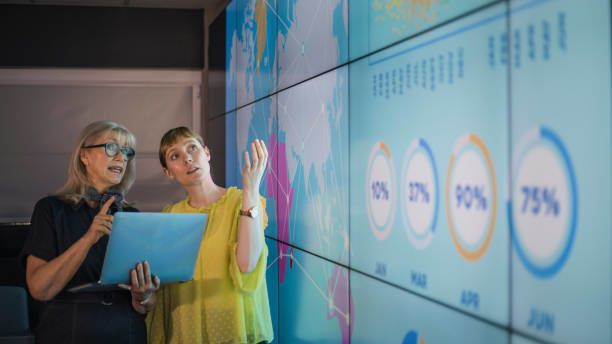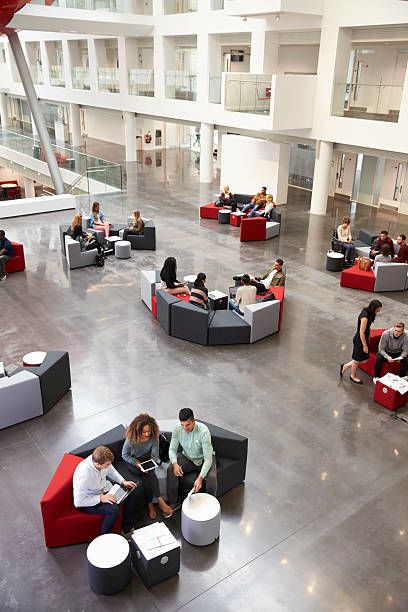Trends in Education: Lifelong Learning
Colleges are revamping their offerings and campuses to attract older students and others who require education throughout their lives.

When Patricia McGuire took the helm at Trinity Washington University 30 years ago, the college’s northeast Washington, D.C. campus already featured an adult-education program. But it didn’t exactly make its older students feel welcomed.
“We rolled up the sidewalks and closed down at 5 p.m. We stayed closed on weekends, even though we had a weekend college,” McGuire, the university’s president, says.
To make things better for older students, McGuire began to make changes with them in mind. She made sure offices on campus, including those that offer advising, food services, and financial-aid guidance, remained open on weekends and till 7:00 p.m. on weekdays.
Thanks in part to such changes, Trinity Washington’s School of Professional Studies, which opened in 2000 and is aimed at working adults, has mushroomed to 400 students — about 20 percent of Trinity’s total enrollment — and its growth shows few signs of slowing.
Adapting Campus to Today’s Students
A similar scene is playing out nationwide. Colleges see so-called nontraditional students as a new and necessary market for a variety of reasons. U.S. demographic trends predict that fewer “traditional” students — 18- to 22-year-olds who stay for four or more years to earn a degree — will be available to fill college seats in the near future. Adults seeking degrees or other educational credentials can ease colleges’ enrollment worries.
But there’s another factor at work. The job market of the future will favor employees with emotional intelligence who can work in tandem with cutting-edge technologies like artificial intelligence. A college degree earned years ago may not be enough to keep employees vital at their jobs. Institutions that change their learning model to reflect this new, developing economy have a better shot at remaining relevant.
“If our goal is to train people of the next generation to apply their inherent human strengths to work in the digital economy, universities will have to update their own skill sets,” writes Joseph Aoun, the president of Northeastern University, in his book, Robot-Proof: Higher Education in the Age of Artificial Intelligence.
The Changing Nature of Work
To develop both the human and technical skills necessary to flourish during what some have described as the fourth industrial revolution, workers require more education as they move through their careers. Global surges in life expectancy have kept workers at their jobs longer, requiring them to learn new skills to remain viable. Because of that, many companies and workers have come to see the value in lifelong learning.
It’s clear there has been a cultural shift in how employers view education. According to the Collegiate Employment Research Institute, 78 percent of employers say they value an employee’s ability to do the job and their work experience more than they do a particular academic degree.
Many companies now offer to pay tuition so employees can earn “microcredentials,” such as badges, certificates, and other nondegree-learning opportunities that help them learn more about their professions. Such programs are coming online at a faster clip as employers require workers with upgraded abilities, and more of them who possess the “soft skills” they increasingly desire. Employers want more people who can think creatively and critically, and who can supplement the burgeoning new technologies they use with tasks only humans can perform.
Students also see lifelong learning as part of the employment landscape. In a recent survey conducted by Ellucian, a higher-ed technology company, a high number of students — 88 percent — say they will seek more training after they complete their current educational program. Almost all of them believe that earning an additional credential on top of a degree will make them more specialized in their field.
Forward-thinking universities that recognize the need to shift from focusing mostly on younger full-time students to offering career-development skills to a wide variety of nontraditional learners — adult learners, veterans, and part-time students — are changing how they teach.




Expanding Curricula to Prepare Students for the Jobs of the Future
Northeastern now offers many more interdisciplinary degrees to all types of students that aim to prepare them for a work world that requires more emotional intelligence and skills related to AI. The university’s biology program has been augmented with data analytics to create a biological-analytics program. An MBA degree once focused solely on business. But Northeastern has expanded the curriculum to include immersion in another culture and intensive knowledge of data science. Students focus more on global engagement. Cultural competency ranks as a key soft skill for Northeastern grads.
“Most of the jobs of the future will be hybrid jobs that emphasize the perspective that humanities courses offer along with strong knowledge of emerging technologies,” says Deanna Raineri, vice president and vice provost for digital learning and mobility strategy at Northeastern.
Like many universities, Northeastern has also made sizable parts of its curricula available online to attract more lifelong learners. The numbers of students in the United States who study online grows year over year — and the fastest-growing group among them is professional learners.
Creating Welcoming Spaces for Adult Learners
Adult learners insist on having the flexibility that online courses offer, but many say they also want more of a sense of community on their campuses. Colleges have created methods and physical spaces for linking them with other students. The goal is to make nontraditional learners feel more comfortable.
Campus leaders at Northeastern have worked to connect nontraditional students by turning the college’s seven regional campuses into learning hubs that include spaces where students (both adult learners and other students) can gather in study groups. The university also encourages its instructors to notify students by email or text when they travel from one campus to another, so students can meet with them. It invites online learners to alumni events.
“All of our students, even freshmen, are now lifelong learners,” says Raineri. “Everyone is going to have to constantly learn new skills and acquire new knowledge throughout their careers. Our students will need somewhere to go to progress throughout their lives.”
Other campuses, including Colorado State and San Diego State, now offer physical spaces set aside for nontraditional adult learners. At Arizona State, officials are even building a senior-housing complex that will offer educational programs.
Creating Welcoming Spaces for Adult Learners
Adult learners insist on having the flexibility that online courses offer, but many say they also want more of a sense of community on their campuses. Colleges have created methods and physical spaces for linking them with other students. The goal is to make nontraditional learners feel more comfortable.
Campus leaders at Northeastern have worked to connect nontraditional students by turning the college’s seven regional campuses into learning hubs that include spaces where students (both adult learners and other students) can gather in study groups. The university also encourages its instructors to notify students by email or text when they travel from one campus to another, so students can meet with them. It invites online learners to alumni events.
“All of our students, even freshmen, are now lifelong learners,” says Raineri. “Everyone is going to have to constantly learn new skills and acquire new knowledge throughout their careers. Our students will need somewhere to go to progress throughout their lives.”
Other campuses, including Colorado State and San Diego State, now offer physical spaces set aside for nontraditional adult learners. At Arizona State, officials are even building a senior-housing complex that will offer educational programs.

Benefits for Both Students and Institutions
The opportunities for higher ed are myriad. But to reach the 30 million Americans who started degrees they haven’t finished, or the growing numbers of workers who need to keep their skills up to the ever-accelerating pace of technological change, colleges will need to change how they recruit and support students.
If they do, the results will be well worth it, McGuire says. Besides the value in dollars and of filling empty seats, lifelong learners offer colleges other, less tangible advantages.
“Helping adult students elevates our mission. Our older students help us in many ways, from identifying internship opportunities at their companies for our younger students to making the classroom experience richer,” says McGuire. “We’re much better with them here.”



